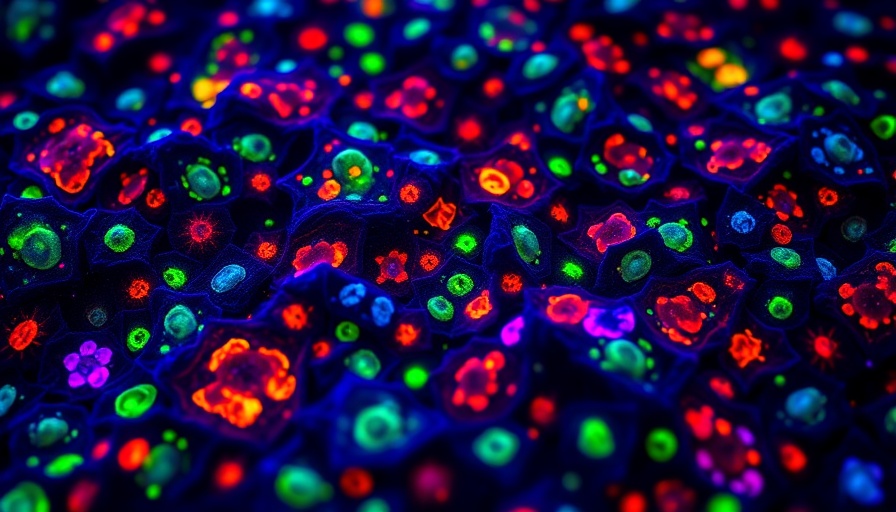
A Longitudinal Look at Autism : Genetics, Environment, and Prevalence Trends
The prevalence of autism spectrum disorder (ASD) has increased dramatically over the past two decades, prompting researchers, health agencies, and families to question what’s driving the numbers. According to the Centers for Disease Control and Prevention (CDC), autism now affects 1 in 36 children in the United States—a striking contrast to the 1 in 150 figure reported in 2000. While some argue that environmental factors are chiefly responsible, others point to advances in diagnostic practices and a deeper understanding of autism’s genetic components.
This growing recognition doesn't necessarily indicate a true surge in autism cases. Instead, it may reflect a combination of factors: improved awareness, changes in diagnostic criteria, greater access to services, and shifts in public attitudes toward neurodevelopmental differences. Still, some experts, including public health figure Robert F. Kennedy Jr., maintain that external influences like environmental toxins or vaccine ingredients warrant deeper exploration. As this debate continues, science is uncovering increasingly detailed insights into the biology of autism—especially at the genetic level.
Why Autism Prevalence Is Rising: A Data-Driven View
To understand why autism prevalence appears to be rising, it's crucial to examine the data collection methods and societal shifts that affect diagnosis. Health organizations have broadened the criteria for what qualifies as ASD, recognizing a wider range of behaviors, abilities, and support needs. This expansion has led to the inclusion of individuals who might previously have gone undiagnosed or been misdiagnosed under different labels such as intellectual disability or speech delay.
In addition, early screening has become more routine. Pediatricians and schools are better equipped to spot signs of autism in toddlers and young children, leading to earlier interventions and more comprehensive tracking. Increased awareness among parents, educators, and healthcare providers means more children are being evaluated and identified.
However, epidemiologists also caution that while these factors contribute to the increase, they don’t necessarily account for all of it. Socioeconomic disparities still affect diagnosis rates, and certain communities remain underdiagnosed. Moreover, while some suspect environmental exposures may play a role, conclusive population-wide evidence linking them directly to ASD is still lacking.
The Genetic Foundations of Autism: What Research Shows
Genetics is now widely regarded as a foundational factor in autism. Recent studies have pinpointed hundreds of genes associated with increased ASD risk. Many of these genes are involved in brain development, synaptic communication, and neuroplasticity. One particularly notable study in Autism Research explored the age-specific effects of mutations in the CNTNAP2 gene—demonstrating how such mutations impact fear memory and cognitive function in children.
Another groundbreaking article in Cell Reports emphasized the role of ZNF292, a gene critical for the development of cortical interneurons in the brain. These neurons play a key role in information processing and social behavior, and abnormalities here may contribute to core autism characteristics. Together, these findings support the theory that disruptions in early brain development can lead to the social and sensory differences typical of autism.
Genetic testing is increasingly used to support diagnosis and identify syndromic causes of ASD, especially in cases of profound autism or co-occurring intellectual disabilities. While not all individuals with autism have identifiable genetic markers, studies suggest up to 20–25% may have a known genetic condition that contributes to their diagnosis.
Environmental Triggers and Autism: The Ongoing Debate
Although genetics plays a central role, environmental factors remain a hotbed of investigation. Researchers are studying how exposures during pregnancy—such as infections, air pollution, or maternal stress—might influence neurodevelopment. Additionally, some suspect a link between immune responses, hormonal imbalances, or metabolic dysfunctions and autism risk.
The controversy surrounding vaccines and autism persists in some public discussions despite overwhelming scientific evidence debunking any causal relationship. The original 1998 study suggesting such a link was retracted due to ethical violations and methodological flaws. Since then, dozens of large-scale studies have found no credible evidence that vaccines cause autism. Nevertheless, public perception and political commentary continue to stoke fear and skepticism, underscoring the need for improved science communication.
What’s more productive, researchers argue, is exploring how genetics and environment interact. This concept—known as gene-environment interaction—suggests that certain environmental exposures may affect individuals with specific genetic vulnerabilities, making personalized prevention strategies a future possibility.
New Discoveries in Autism Neuroscience and Therapy
Recent advances in neuroscience are bringing researchers closer to understanding autism at the cellular level. One study published in Nature Neuroscience found that mis-splicing of RNA in autism-risk genes leads to changes in how proteins are expressed in the brain. These molecular disruptions may account for some of the cognitive and behavioral symptoms observed in individuals on the spectrum.
Elsewhere, studies are modeling autism traits in animals to observe neural mechanisms in real time. These models help scientists test interventions and understand how autistic brains process social stimuli, sensory input, and reward.
On the clinical front, CRISPR gene editing is opening up bold new avenues. A Chinese biotech company recently tested CRISPR therapy injected directly into the brain to target a monogenic neurodevelopmental condition—a milestone that could eventually influence autism treatment. While these developments are in early stages, they highlight the potential for personalized, genetic-based interventions that could reshape how we manage complex neurodevelopmental disorders like autism.
What Families and Educators Should Know
For families, caregivers, and educators, understanding the evolving science of autism is more than an academic concern—it has direct implications for early support, intervention planning, and educational accommodations. Genetic testing may help some families make sense of co-occurring medical or developmental issues. For example, a child with a known genetic condition linked to autism might benefit from more tailored therapy goals.
Educators should be aware that autism is not a one-size-fits-all diagnosis. Some students may struggle with executive functioning, while others may excel in academic areas but need help with social communication. Knowledge of neurodiverse learning profiles can inform more effective classroom strategies, such as using visual schedules, minimizing sensory overload, and promoting structured social interactions.
Early intervention continues to be the gold standard for improving outcomes. The earlier support begins—whether behavioral, educational, or developmental—the better the chances of fostering communication, independence, and meaningful relationships.
Key Takeaways: Interventions and Future Insights
Autism prevalence is rising, but that rise reflects more than one factor. Improved awareness, broader diagnostic criteria, genetic research, and ongoing environmental studies are all shaping how we understand this complex condition. The genetic science is advancing rapidly, offering new hope for targeted therapies, while public debate around environmental influences continues to shape funding and research priorities.
For families, this means that staying informed is critical—not only about the latest science but also about how to apply it. Whether it’s pursuing early intervention, considering genetic testing, or advocating for inclusive education, knowledge is power. As science deepens our understanding of autism, it’s also making space for more personalized, compassionate, and effective care.
In the coming years, we can expect even greater collaboration between researchers, clinicians, families, and educators. By aligning genetic insights with practical support systems, we move closer to a future where every autistic person—regardless of their needs—can thrive.
 Add Row
Add Row 

 Add
Add 


Write A Comment